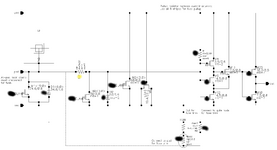Junus2012
Advanced Member level 5

Dear friends,
While band gap reference voltage sources provides a reference voltage that is independent of process, voltage and temperature (talking ideally), because the BGR circuits based on resistors ratios with a value that can balance the PTAT to the CTAT voltages.
However, it looks for me that is not possible to have process independent current sources cause the current is always V/R, and R vary with process, unless if we use external off chip resistor which I am not considering.
Please I need you suggestion of process independent current source.
Thank you
Best Regards
While band gap reference voltage sources provides a reference voltage that is independent of process, voltage and temperature (talking ideally), because the BGR circuits based on resistors ratios with a value that can balance the PTAT to the CTAT voltages.
However, it looks for me that is not possible to have process independent current sources cause the current is always V/R, and R vary with process, unless if we use external off chip resistor which I am not considering.
Please I need you suggestion of process independent current source.
Thank you
Best Regards



